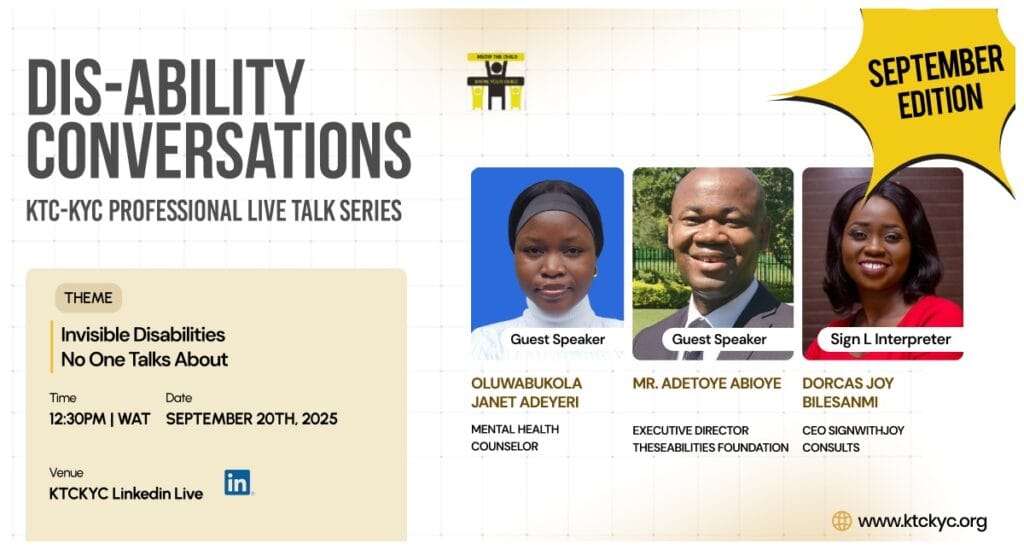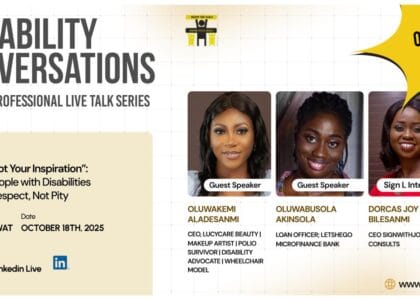Seeing Beyond the Surface: The Truth About Invisible Disabilities
Not all disabilities are visible. Some are carried quietly, beneath steady smiles, behind confident voices, and within people who look “just fine.”
That was the heart of our September edition of Dis-Ability Conversations, where our guests shed light on invisible disabilities, conditions like depression, PTSD, ADHD, autism, learning disabilities, migraines, and even chronic illnesses like diabetes. According to the World Health Organization, about 70% of disabilities are invisible. That means in every group of 10 people, 7 may be living with challenges you can’t see.

The Challenge of What You Can’t See
Our guest speaker, Ms. Adeyeri, shared a story from her experience as a mental health coach.
A young boy, full of energy and seemingly fine, was brought into her clinic. What no one saw at first glance was that he had a neurological condition, ADHD (Attention Deficit Hyperactivity Disorder).
His teachers had labeled him “restless” and “distracting,” unaware that his behavior was a call for understanding, not punishment. It was only after observation and careful conversation that his diagnosis came to light.
Invisible disabilities often show through patterns, behaviors, and experiences rather than appearance. Unfortunately, many people with such conditions are misunderstood, stigmatized, or dismissed as being lazy, weak, or “spiritually troubled.”
Seeing With Compassion
Our society still struggles to understand what it cannot see. When someone says, “You don’t look sick,” or “You’re too young to be depressed,” it invalidates real pain and creates deeper silence.
As one of our speakers, Ms. Adeyeri noted, “It’s okay not to be okay.”
We must move away from stigma and toward empathy and inclusion.
Mr. Adetoye emphasised the need that workplaces, schools, and communities should intentionally create policies that acknowledge and support invisible disabilities, through mental health awareness, flexible environments, and non-judgmental spaces.
It begins with listening.
It grows through understanding.
And it thrives when we choose compassion over criticism.
A Call to Action!
Invisible disabilities are not less real because they can’t be seen.
It’s time to design workplaces, schools, and communities that see beyond appearances and respond with empathy.
Let’s make inclusion practical, by validating feelings, offering support, and being patient with what we may not fully understand.
Because sometimes, the people who look “perfectly fine” are fighting the hardest battles.
Missed the conversation?
Catch the replay here → ENJOY!

